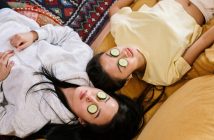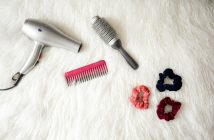 In my previous blog I mentioned that I would perform practical yet humiliating tasks in Chinese in order to my pass my knowledge onto beijingkids readers. Without realising quite what I was getting myself into, I decided to book myself a haircut (yu ding yi ge jian fa de shi jian 预订一个 剪发的时间) with a Chinese hairdresser and place my language to the ultimate first test.
In my previous blog I mentioned that I would perform practical yet humiliating tasks in Chinese in order to my pass my knowledge onto beijingkids readers. Without realising quite what I was getting myself into, I decided to book myself a haircut (yu ding yi ge jian fa de shi jian 预订一个 剪发的时间) with a Chinese hairdresser and place my language to the ultimate first test.Like all things in China, the good old point-and-nod technique is good place to start for those who are a bit rickety on their Chinese-language-legs. My first and most important piece of advice: Have a photo with you of the exact haircut you want. I can’t stress that enough. A friend of mine who’s Chinese is not great made the mistake of going to a Japanese hairdresser. Between English, Japanese and Chinese translations, he ended up with a faux-hawk crossed with a mullet.
I pointed at my photo of Nicole Richie looking emaciated but with great hair, and said, “I want that style” (wo yao zhe ge yang zi 我要这个 样子).
My lovely hairdresser got it right away and proceeded to cut while talking non-stop to me in Chinese. My next piece of advice: Take any opportunity to talk with a Chinese person who’s willing to talk with you. I asked her the most mundane questions, but I was surprised how good I felt for simply making the effort. A good question to get the conversational ball rolling, “Have you been busy today?” (jin tian ni mang ma?
今天你忙吗?)
Between nodding along to a conversation I didn’t really understand, I kept hearing my hairdresser say, “Wo lu me, ni kan”. “Kan” (看) means look, but I wasn’t sure what I was supposed to be looking at. So I replied, “ Yes, wo lu me” in an effort to appear somewhat language proficient.
I had reached the blow-drying portion of the proceedings without any problems, when my hairdresser started to show me how to do my hair at home. She flipped her head upside down and began blow-drying her own hair while saying “Look! wo lu me”. All of a sudden the pieces fell together. In an effort to speak English, she’d been saying volume the whole time. In my sudden recognition, I replied ecstatically, “Ohhhh, volume! Yes, I know how to do it.” (Dui, wo zhi dao zen me zuo 对,我知道怎么做).
My first Chinese language haircut was a success. “Hao kan!” (Looks good. 好看) I exclaimed to my bubbly hairdresser and she gazed triumphantly at the volume of my previously limp hair. She did such a good job I’m now looking forward to my next appointment/Chinese lesson.
Have something to say about this article? Talk about it on the beijingkids forums.
Flickr photo published under the Creative Commons licensed content.



